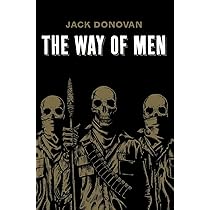Chapter 28 — Inconsistencies
byChapter 28 — Inconsistencies offers a thought-provoking encounter between two men from vastly different cultures as they observe the unfolding of a formal American social event. One, a Westerner used to the ebb and flow of local customs, casually lights a cigar on the piazza to escape dull conversation about sports. The other, a young Turk, carries himself with solemn curiosity, having expected the event to begin promptly, as written on the invitation. His confusion is met with calm explanation—the start time is just a formality, not a promise. The Westerner chuckles at the cultural difference, noting how such looseness with time is not carelessness, but a reflection of American informality in social gatherings.
As the ballroom fills with guests, the Turkish man becomes increasingly bewildered by the contradictions he observes. The women, adorned in gowns that sparkle under the gaslight, move freely in dances that involve close contact with their male partners. Yet these same women, he’s told, live by rules that place heavy emphasis on modesty, propriety, and the appearance of virtue. This contradiction seems illogical to him. How can such intimate public gestures coexist with strict codes of moral judgment? The Westerner explains it as part of the American paradox, where behavior is judged differently depending on place and time—even when it appears identical on the surface.
Their conversation turns toward women’s roles and expectations, with the American remarking on how men often become bystanders to their wives’ social lives. He offers a dry observation that women here are not submissive, but rather central to the rhythm of society, often prioritizing public charm over private intimacy. The Turk, raised in a culture where feminine modesty is paramount and marital structure rigid, finds this independence both admirable and unsettling. The Westerner, aware of his own culture’s inconsistencies, does not defend them so much as acknowledge their complexity. To judge by appearance alone, he adds, would often lead one astray in America’s shifting social landscape.
The discussion deepens when they touch on flirtation—a practice seen as both harmless and scandalous depending on one’s audience. The American draws attention to the performative nature of interactions at the opera or ballroom, where fashion and flirtation are forms of social currency. A woman’s dress may shock in one context and seem perfectly acceptable in another, depending on the room she’s in and who’s watching. The Turk remarks that such shifting codes would be seen as hypocrisy back home. His companion counters that it’s not hypocrisy, but rather a form of adaptability, rooted in the freedom to shape appearances according to social setting.
As they continue to talk, the Westerner recognizes how difficult it is to explain these contradictions. The Turkish guest is thoughtful, trying to reconcile the refined hospitality he’s received with the looseness of the customs around him. He finds it peculiar that America prizes both openness and secrecy, encouraging bold display but quick judgment. The Westerner concedes that Americans often struggle to live up to their own ideals, that their culture is one of many double standards—and yet one that embraces self-examination. It is this tension between freedom and propriety that defines their public life.
The Turk, in the end, says little more. His silence carries the weight of reflection, the kind that doesn’t seek immediate answers. For him, the evening has become less about dancing and more about trying to understand a culture that speaks in contradictions. The Westerner watches the younger man return to the ballroom, unsure whether he’s closer to understanding or more confused than ever. But there’s an unspoken agreement that the truth, as ever, lies somewhere between perception and intention.
This chapter becomes not just a tale of cultural comparison but an invitation for readers to consider how norms are formed, challenged, and sometimes contradicted. By drawing attention to America’s social inconsistencies through the lens of an outsider, it asks a timeless question: are we shaped by our principles, or by the ways we learn to bend them?

